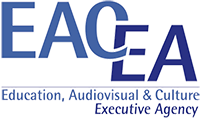Researching through Action
Dervil Jordan, Fiona King and Tony Murphy
Irish Team
The Creative Connections project united a dynamic and diverse collective of research interests across Europe that is specific to each of the six-partner countries’ experiences of implementing the project. Each study made an important contribution to the fields of both Art and Citizenship education in formal primary and post primary sectors.
Art education and citizenship are inextricably linked through a similarity of concerns in their core subject content. In alignment with Granville’s (2010) premise that Art education is uniquely well placed to foster attitudes and dispositions of critical judgement,each country’s study identifies a range of innovative cross-curricular activities that incorporate both the subject of art and citizenship education in formal education structures. In doing so, the Creative Connections project enabled the participant pupils to interact with their European peers through the use of new media and interactive digital environments facilitated on the Connected Gallery within the Creative Connections site.
Across each country the research placed particular emphasis on examining the problematic and often challenging terrain of how to conceptualise and question ones perception of European Citizenship and identity. The research extended its remit to explore how the creation and appraisal of contemporary art practice can be utilised as a space for learning to interrogate individual and collective identities and our understanding of ‘being European’. Several of the partner countries studies considered how contemporary art practice is a unique lens in which Creative Connections participant pupils can question their messages and meanings and produce their own symbolic representations as a way of orienting themselves to the world (Mason, 2013).
To begin with, the English research team identified three distinct areas of research interest. These incorporated the exploration of the complex concept of identifying oneself as being European and how best to introduce European Citizenship topics within a restrictive and reductive curriculum at primary and post primary levels. The research also examined the blogging interaction between pupils on the Creative Connections site and how their use of language mirrored the language of social networking and messaging. In conclusion, the English team explored how contemporary art practice can become a vehicle for encouraging cognitive skills and learning across the curriculum, in relation to the expression of pupil’s self-identity, and how they communicated with one another across Europe.
A similar concern preoccupied the Irish and Spanish research studies which examined the impact of the Creative Connections project in enabling participant teachers to foster critical and visual literacy skills among their pupils, through the creation and appraisal of contemporary art practice. The Irish team explored how the Creative Connections participant teachers used contemporary art practice as a lens to facilitate their pupils to explore notions of self, Irish and European identity and concepts of citizenship.
The Spanish team examined how the process of working with contemporary art has impacted on the children’s learning process; they focused specifically on a 6th grade class with whom they use an inquiry based learning approach. Their research involved recording the process the children use to construct their identities through a visual pedagogy and how it changed their understanding of art, examining the shift in their use of language by going beyond literality to empower them to have a critical view of their own reality.
Notions of collaboration and the creation of a research community were pivotal to the Finnish delivery of the Creative Connections project. The research of one PhD and three MA students, under the guidance of the Finnish National Coordinator, are integral to the overall body of research that emanates from their experience of implementing the project. Their work was primarily concerned with the different pedagogical approaches to Art Education that they developed through the execution of the Creative Connections project. They placed particular emphasis on community-based art education in northern socio-cultural environments. The participation and agency - especially at the multicultural Sami school in Utsjoki and its collaboration in this international context sets an important focus for the study. Their work identified how the Creative Connections image bank may be used as a model for analysis of contemporary art, which allows for collaborative activities and dialogue among pupils and teachers in a multicultural environment. Their research was rooted in the essential goals of the Creative Connections programme and aims to empower and 'give a voice' to the participating pupils to share their processes of exploring the Cultural Identities and Intercultural Understanding of being European.
The use of the visual narrative as a means to capture the pupil’s voice and the appraisal of contemporary art practice as a space for learning within the framework of the Creative Connections project was a primary research interest for the Czech team. Their researchers explored how narratives can contextualise and are representative of the pupil’s concept of identity and belonging within a contemporary society.
To enable teacher’s voice, the Portuguese research interest specifically explored the impact and the experience of the Creative Connections project on a group of generalist teachers who were participants in the project. The study assessed how their involvement in the project contributed, not only to the acquisition of new knowledge, but also to reflect and rethink their values and attitudes about teaching and learning methods and strategies which are consistent with the principles of a multi / intercultural educational system. The researchers involved also reviewed the participant teachers’ actions and choice of educational materials to examine how it can expand the cultural repertoire of these student generalist teachers. In doing so, they replaced an ethnocentric vision for education perspective to incorporate inter/ multicultural educational viewpoints.
In conclusion, the body of research carried out across the six Creative Connections European participant countries, presents how collaborative approaches between Art and Citizenship education can provide the student with a duality of perspectives. These collective perspectives intersect and complement the exploration of themes surrounding citizenry and identity by utilizing a variety of imaginative visual pedagogical approaches. The research has been made possible by the rigorous work of the Creative Connections participant teachers, who imaginatively and creatively implemented these innovative pedagogical approaches into practice, across twenty-four European schools. This action has enabled the learner to explore, to research, to question, and to value art as an insightful social commentator that explores issue that reflect the concerns of students living in today’s society.


